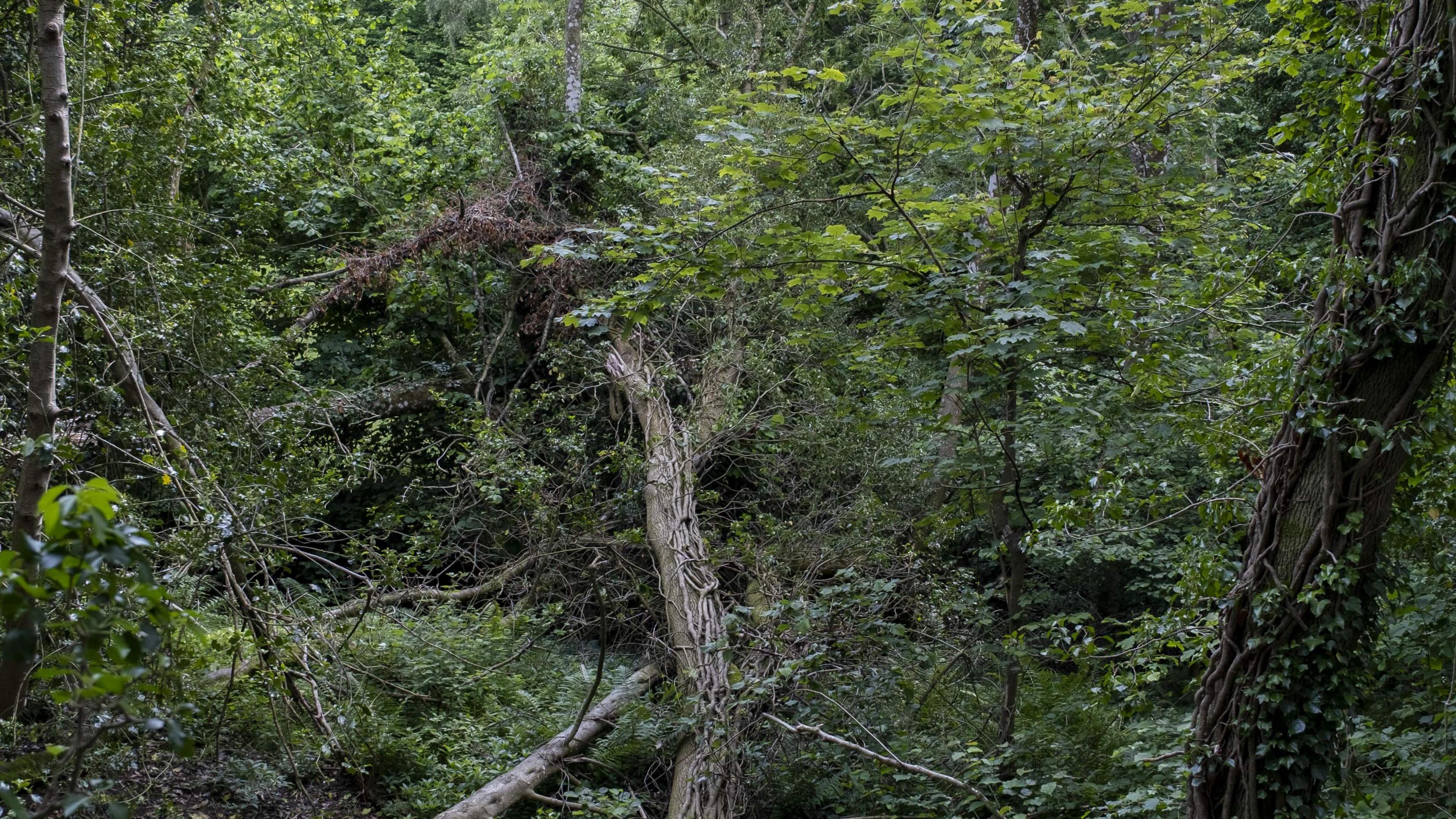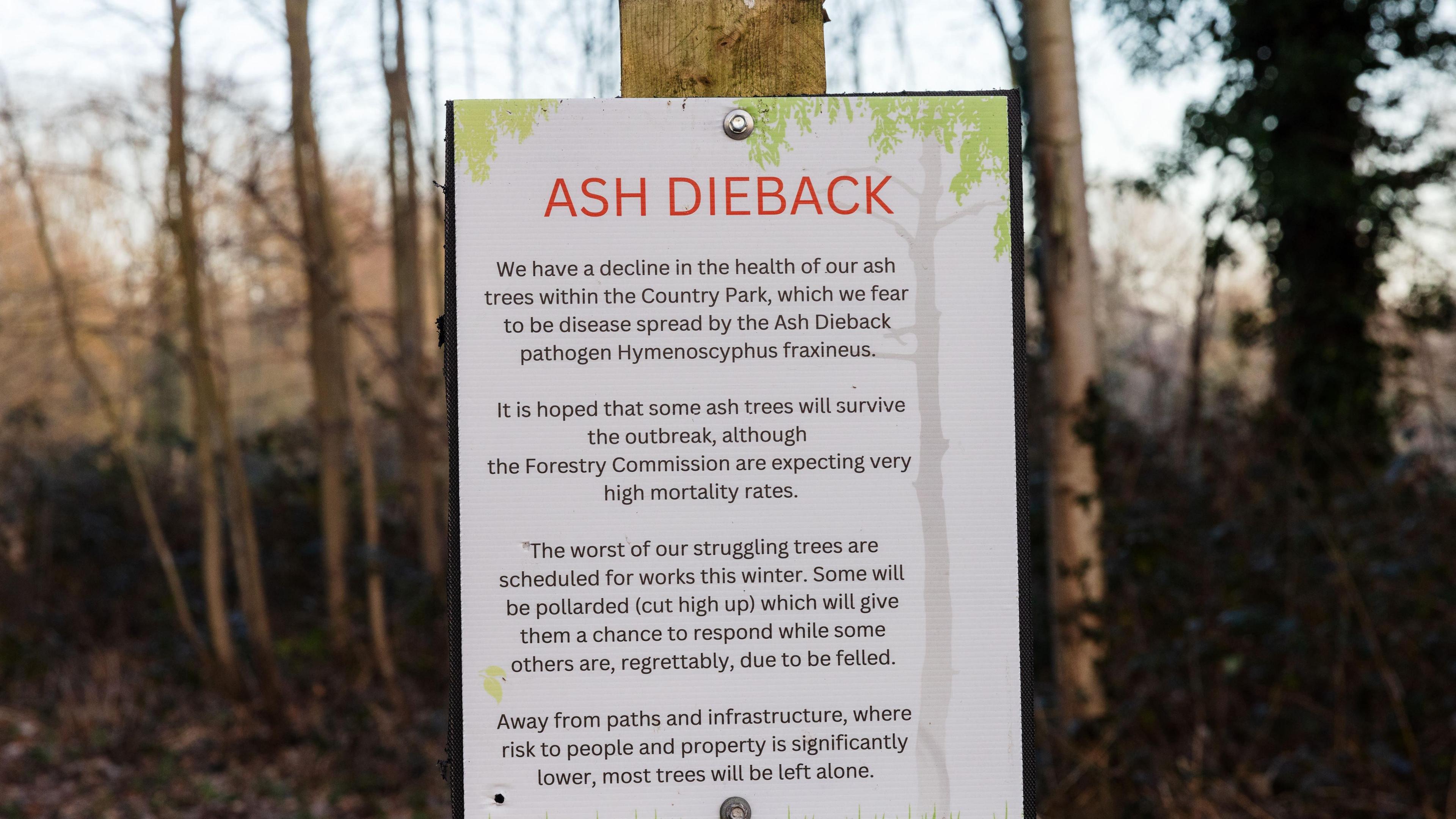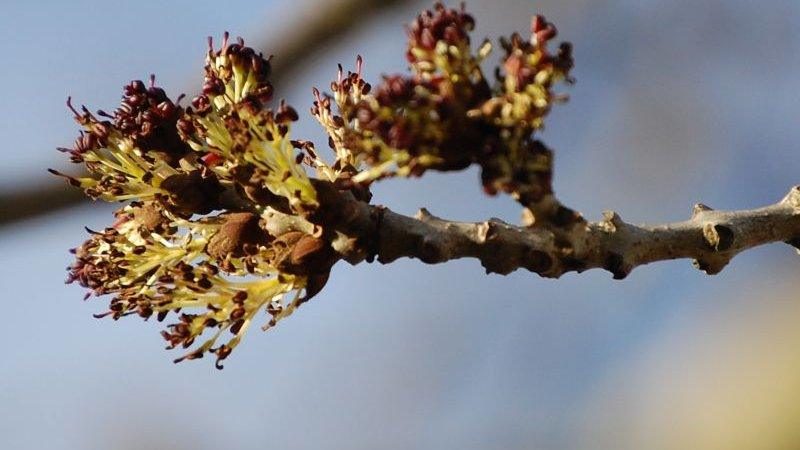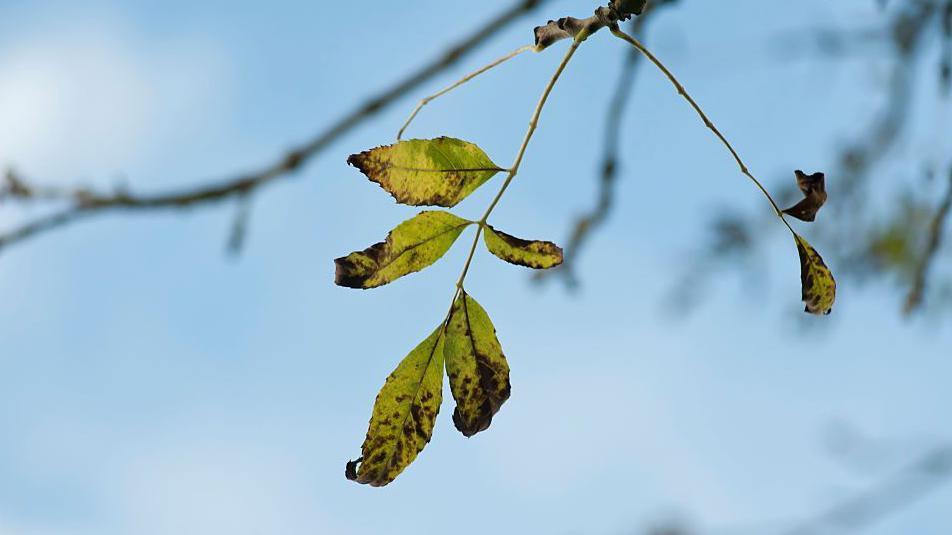More than 2,000 diseased trees in city to be axed

Ash dieback disease was first recorded in the UK in 2012
- Published
More than 2,000 diseased trees across Leeds need to be chopped down, the city council has announced.
The trees are infected with ash dieback disease and are, in many cases, at risk of falling on to public roads and causing disruption, the local authority said.
Around 1,300 of the trees which need to be removed or heavily pruned are on private land, while a further 1,000 are on public council-owned property.
Landowners have a responsibility to manage trees on their own land, Leeds City Council said, and the authority has created an interactive map to help people identify the trees in need of maintenance.
The council, which said it had already removed several hundred trees with the disease, added that both itself and private landowners had a duty to ensure no trees put people or property at unreasonable risk.
An interactive map, external has been created by the local authority to show where the trees concerned are located, while a dedicated webpage with information, external and advice for landowners has also been set up.
Councillor Mohammed Rafique, executive member for environment and green space, said: "In Leeds, our teams have worked hard to identify thousands of trees near to highways that are currently in need of felling.
"If you own land near to the highway then you should check the map to view the condition of your trees, but wherever you live it's also important to read the guidance on the webpage if you are at all concerned about any trees you have on your property."
The council has also said it will plant five new trees for every one it chops down on public land.
What is ash dieback disease?

The outbreak of ash dieback in the UK has been estimated to have cost the country £15bn
According to the Royal Horticultural Society (RHS), ash dieback disease is a fungus that affects ash trees of all ages. Although it can kill trees, in many cases it weakens the tree and leaves it vulnerable to other fatal infections.
Having initially spread around mainland Europe, it was first recorded in the UK in 2012 and has since attacked trees in towns and cities across the country.
In 2019, it was estimated the outbreak would cost the UK around £15bn to deal with.
However, new research published this year suggested ash trees were developing greater resistance to the disease, potentially increasing their chances of survival.
Get in touch
Tell us which stories we should cover in Yorkshire
Listen to highlights from West Yorkshire on BBC Sounds, catch up with the latest episode of Look North.
Related topics
Related internet links
Related stories
- Published6 May 2019

- Published26 June
